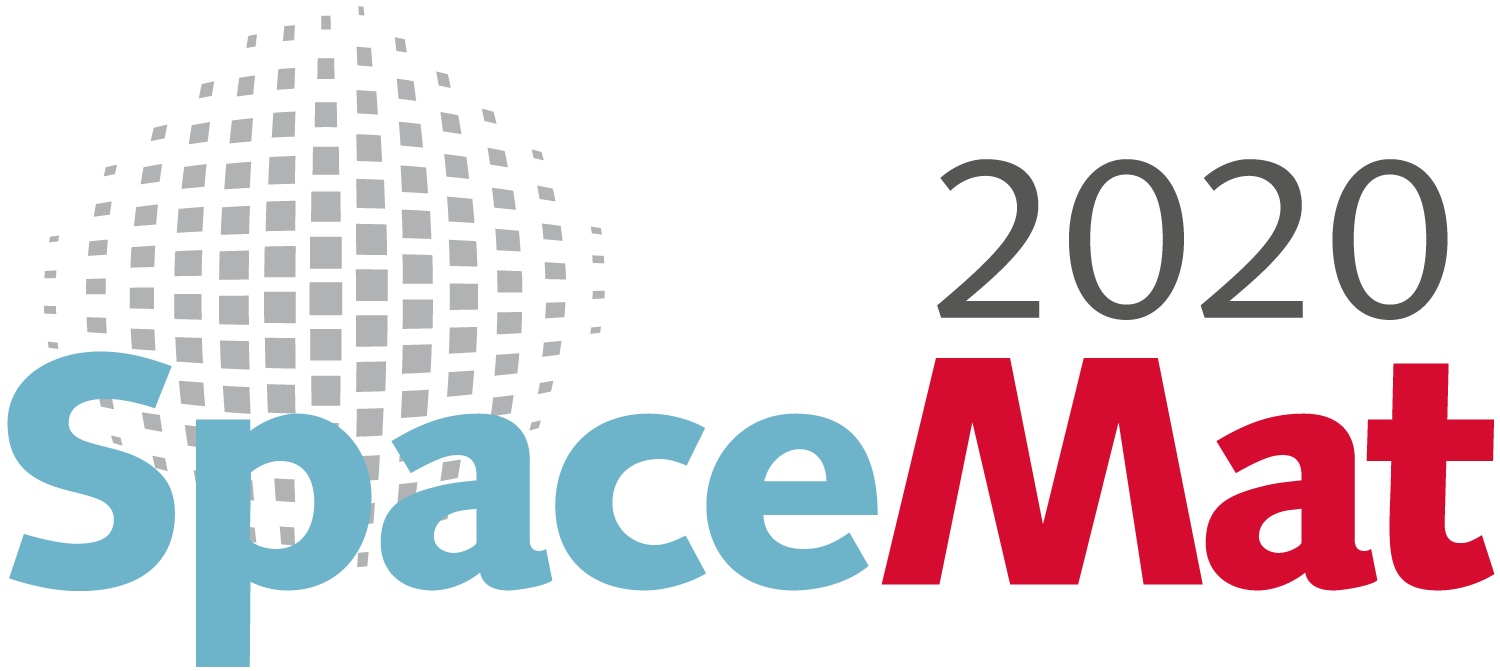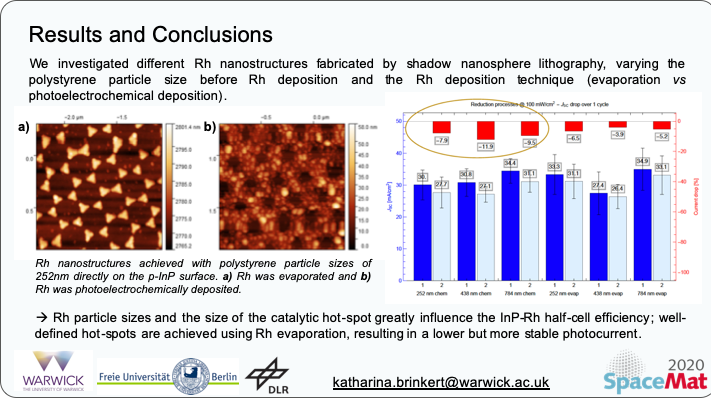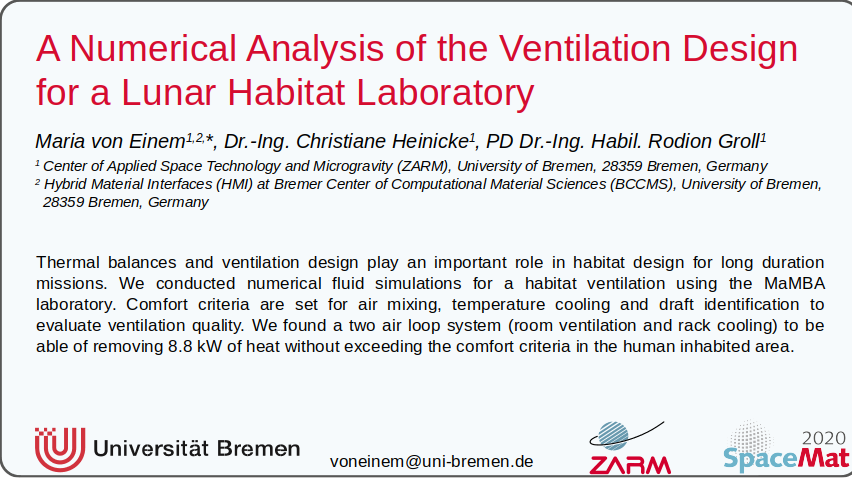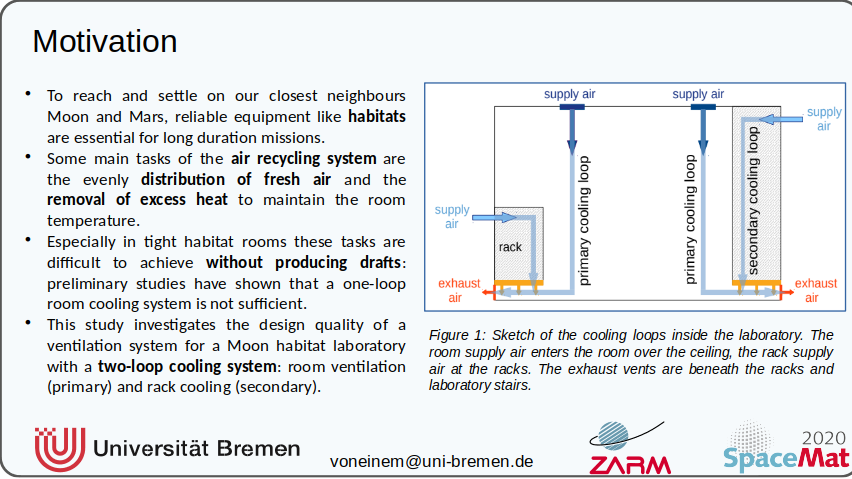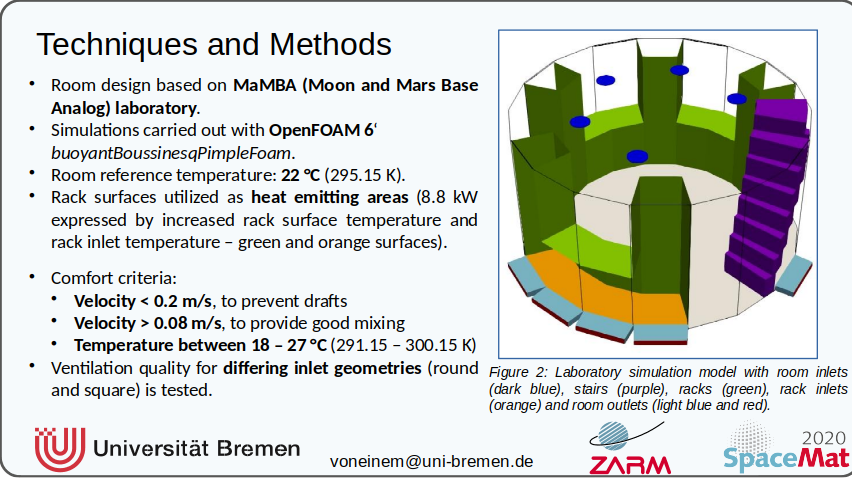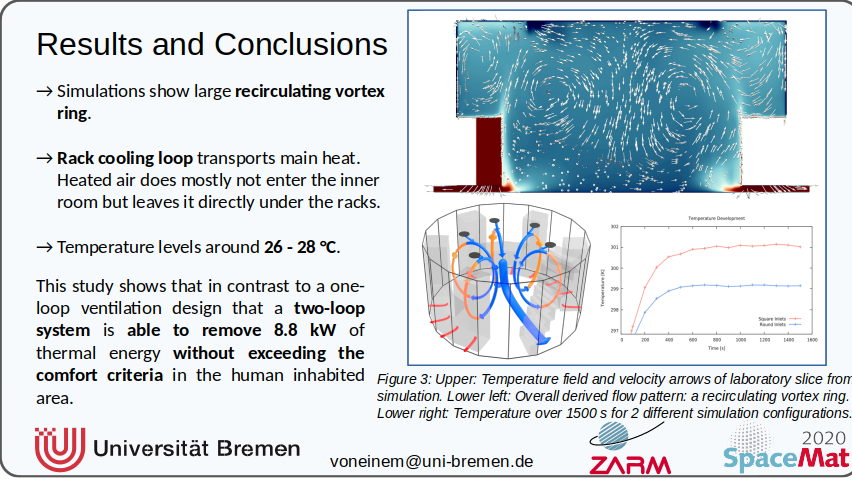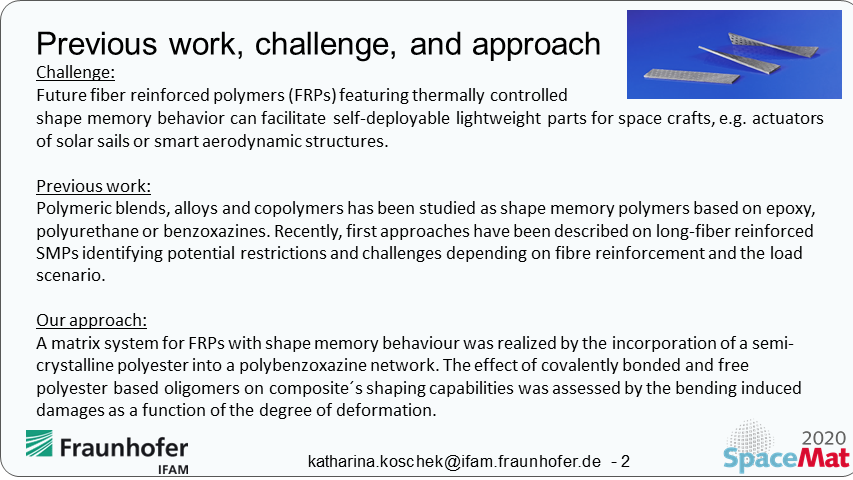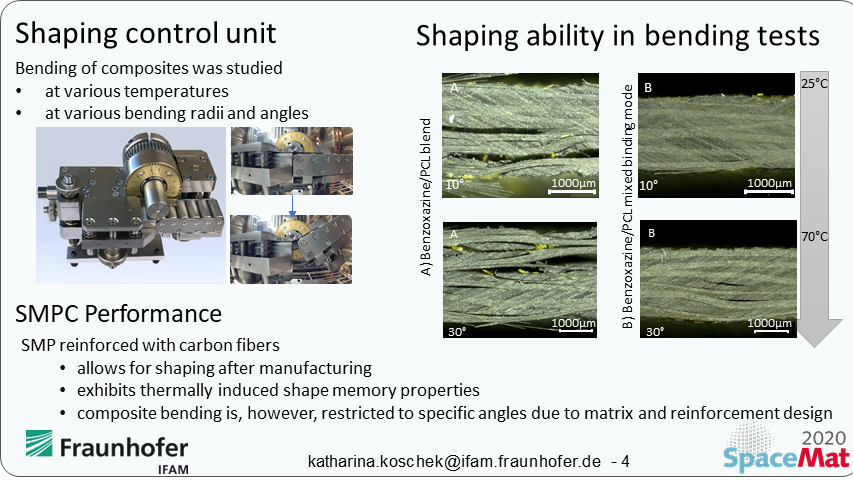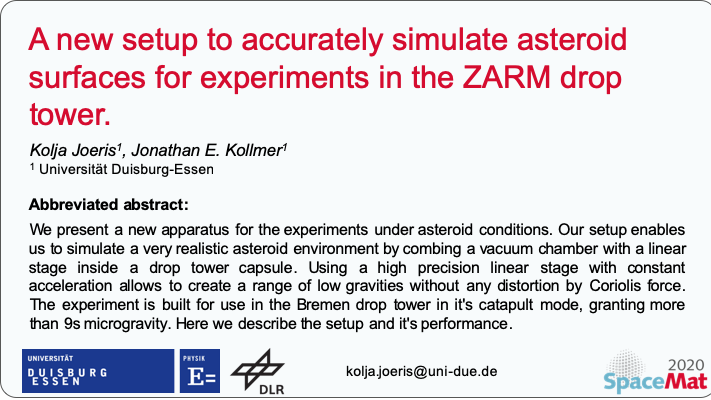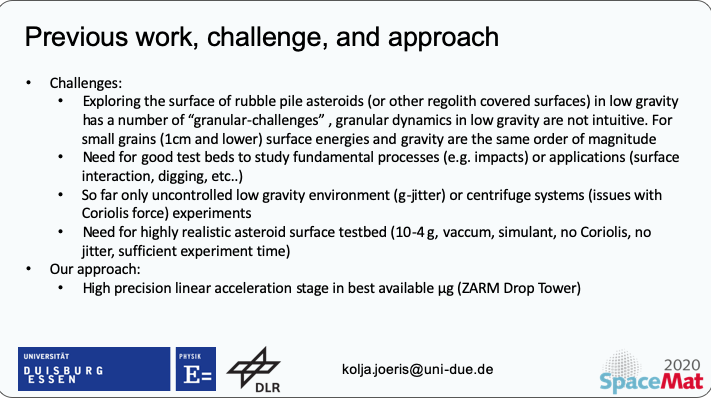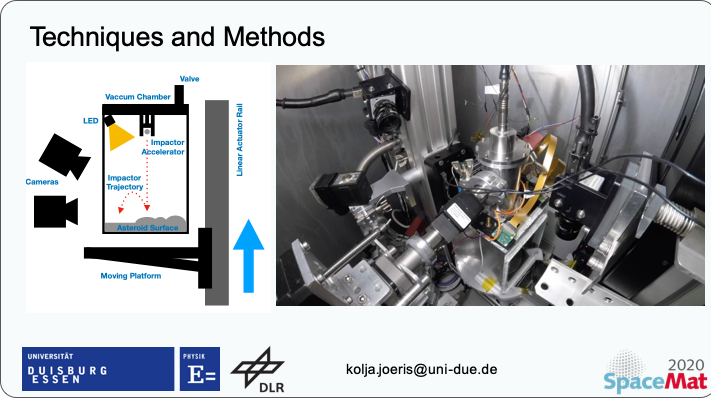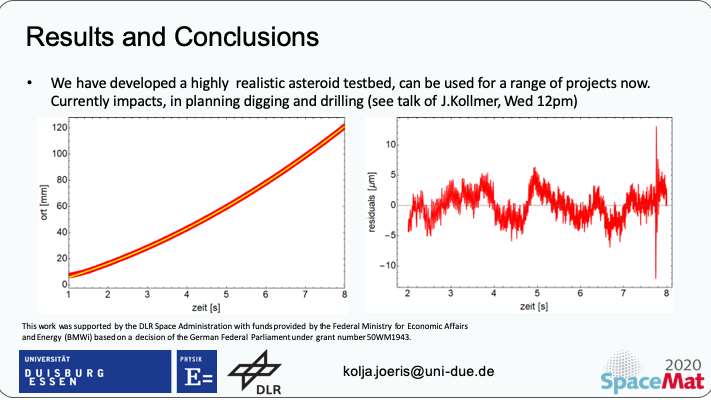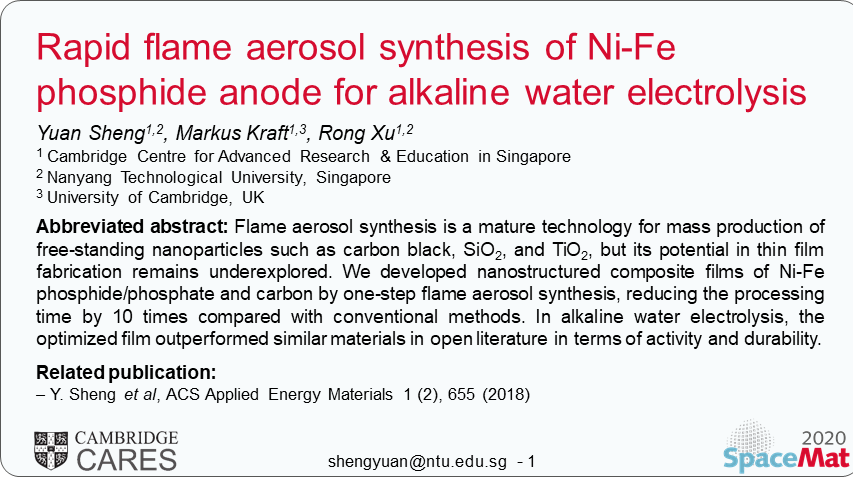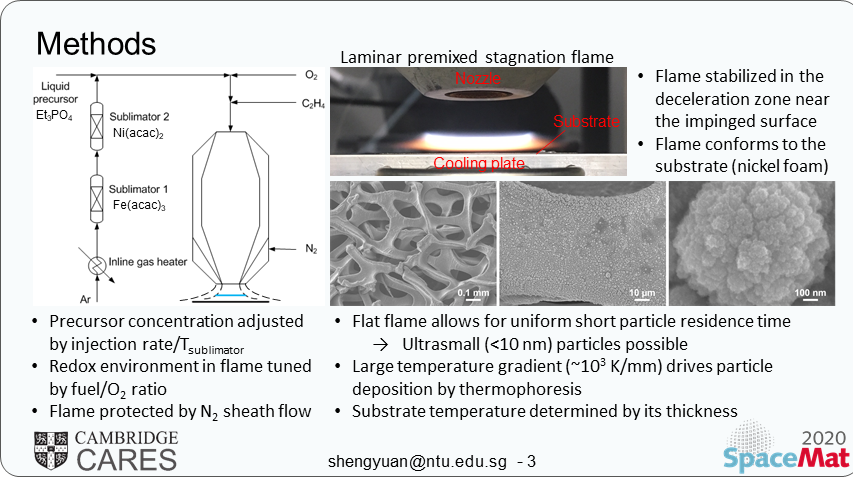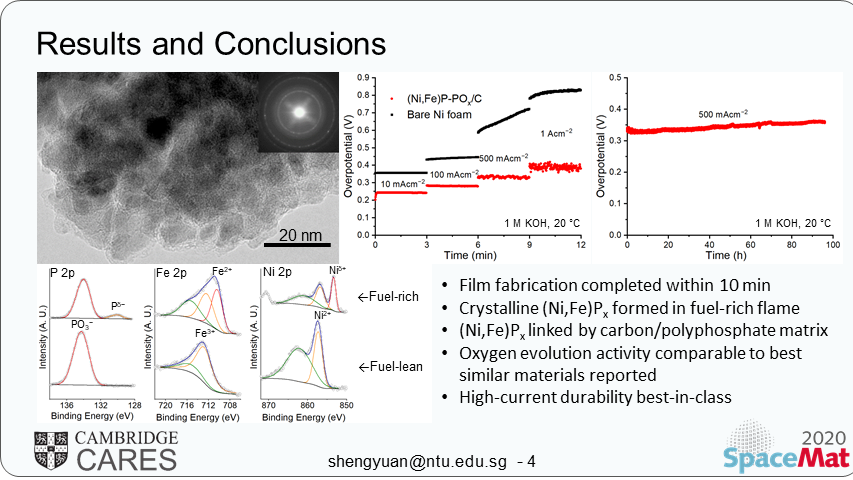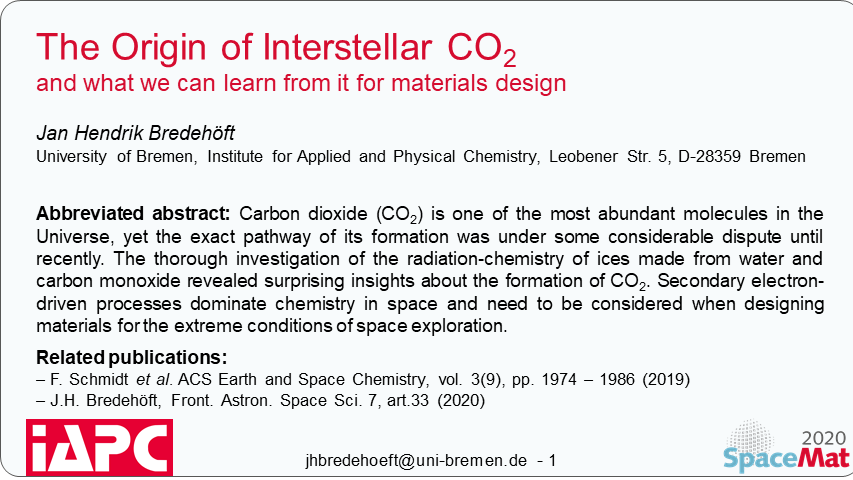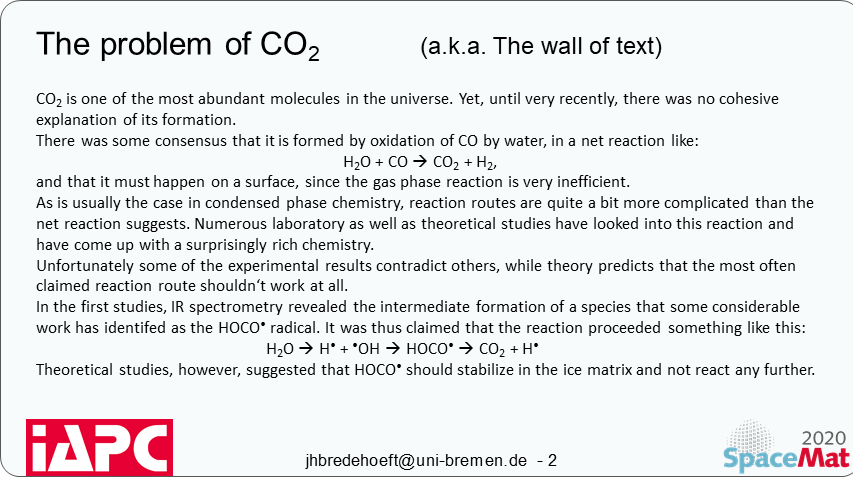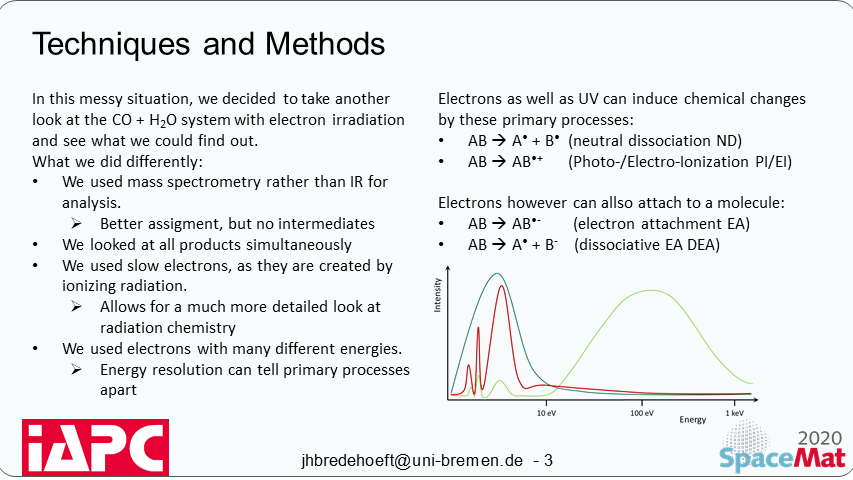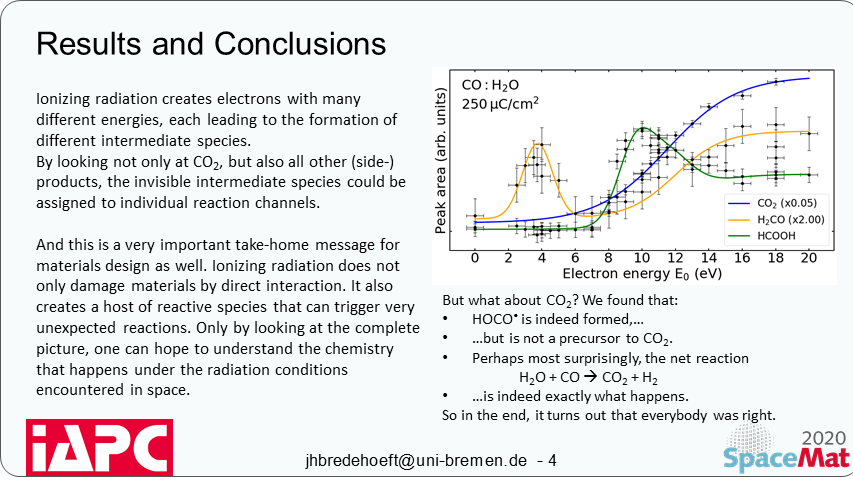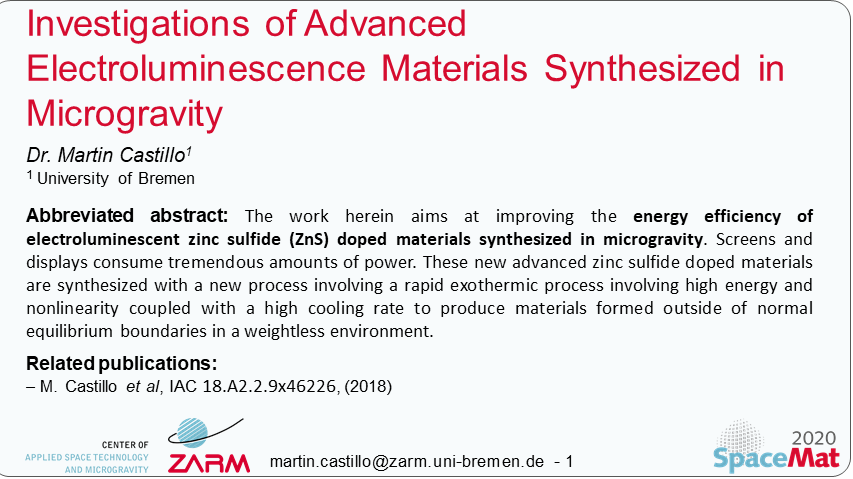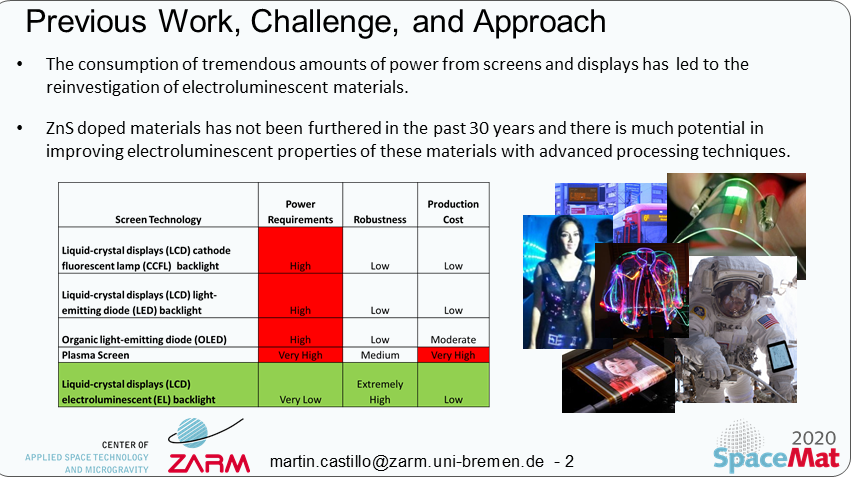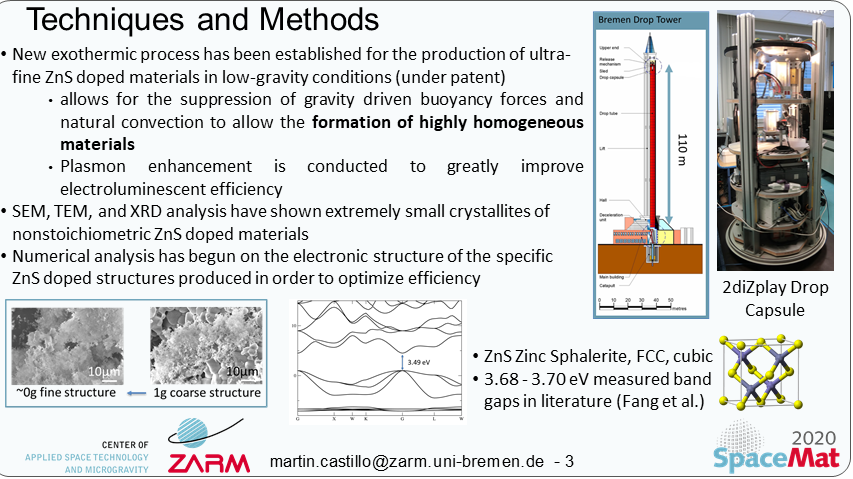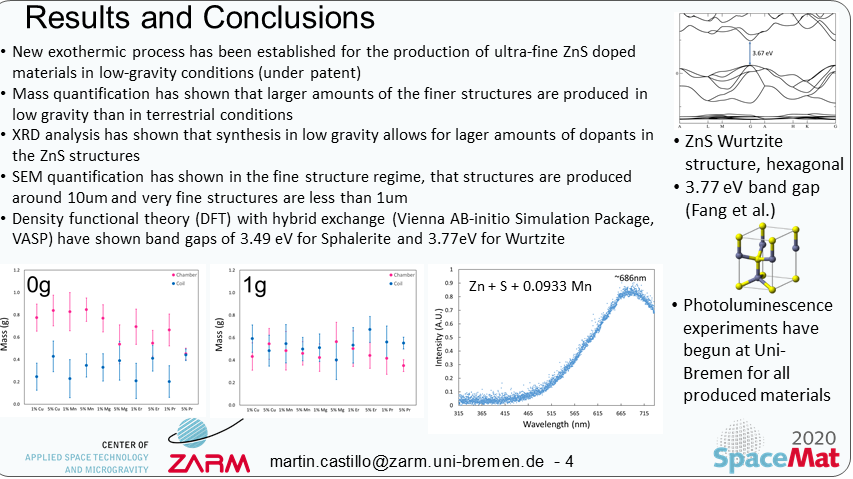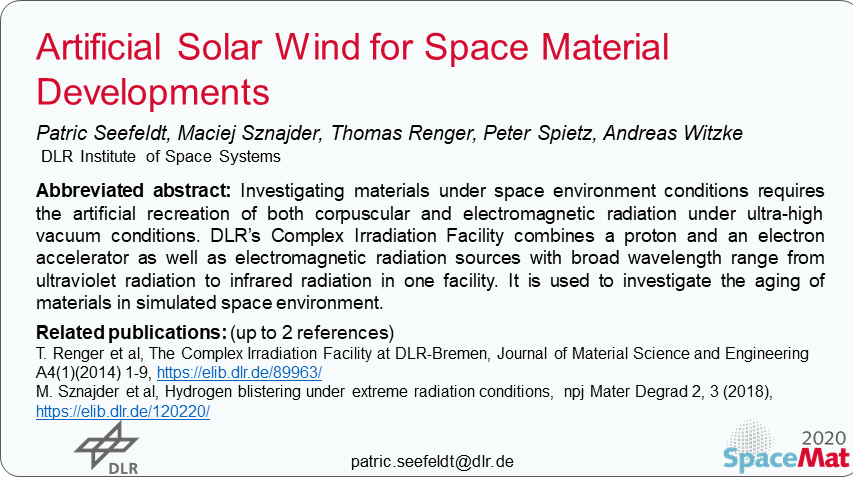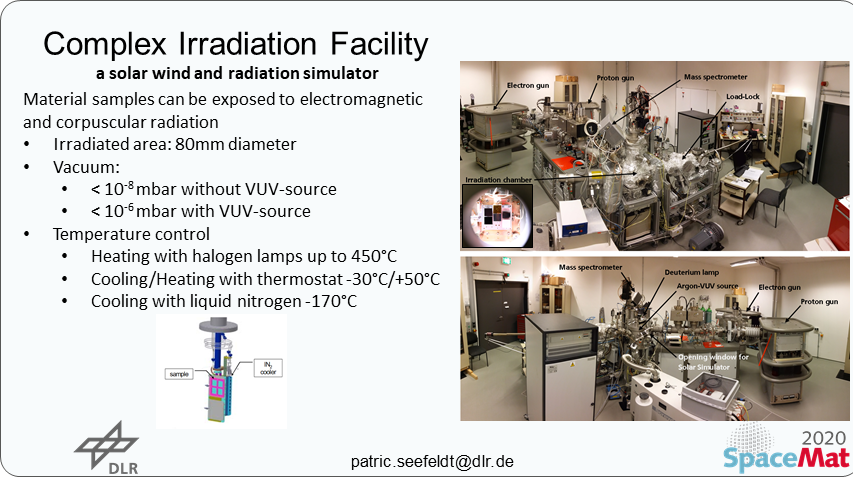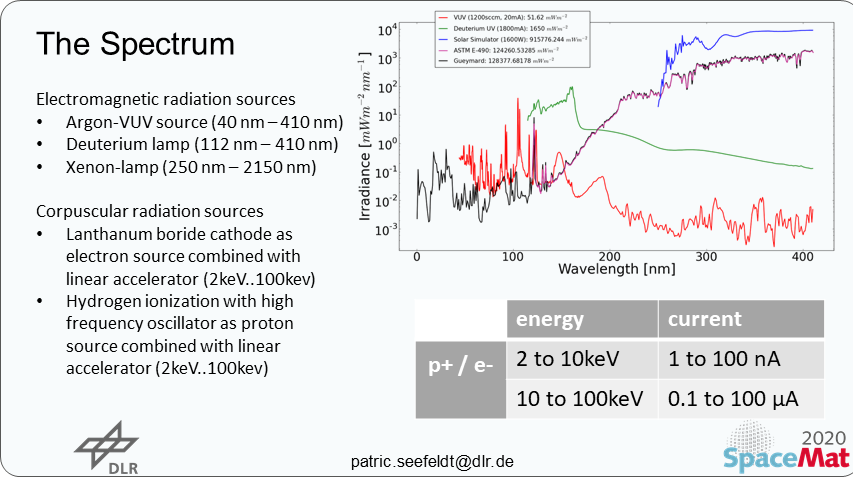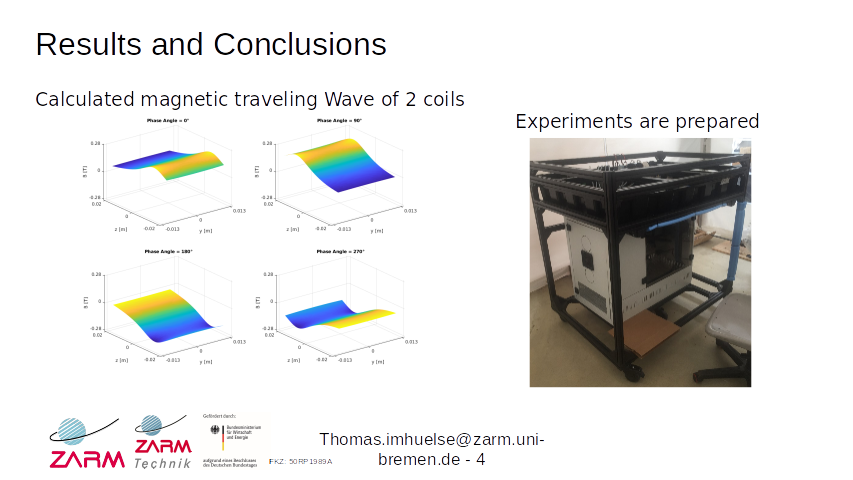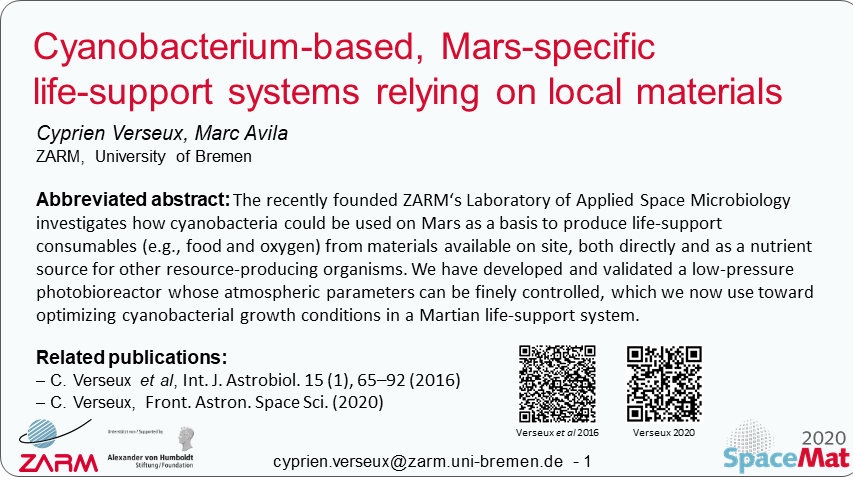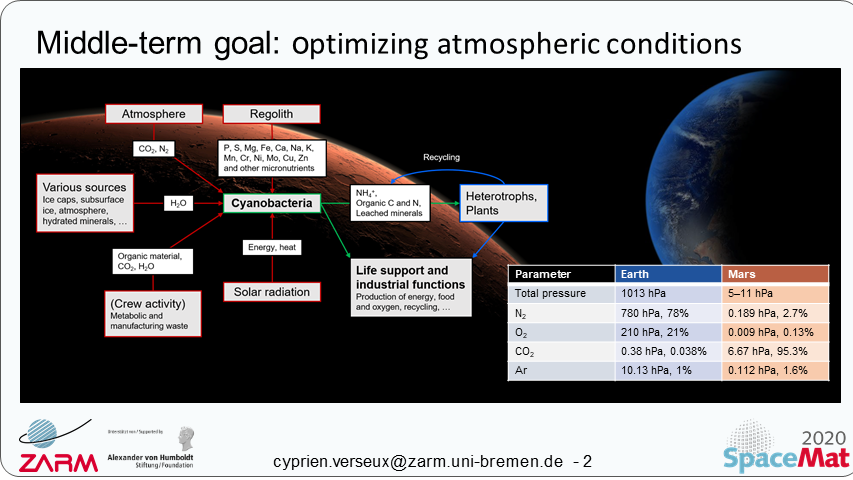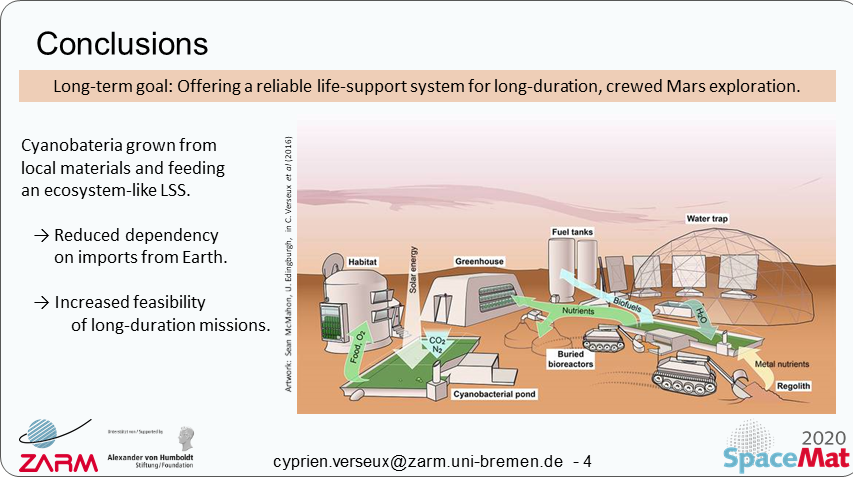Postersession
Postersession 1
Monday, 31 August 2020, 12:45 - 13:45 CET (UTC + 1)
Registered participants will receive the links to the zoom meeting rooms via email. The authors will be available for a live discussion during the postersession.
Materials for photoelectrochemical fuel and oxygen production in microgravity environment (P1)
live online discussion
31 August 2020, 12:45 CET (UTC + 1)
(registered participants will receive the zoom link via email)
Katharina Brinkert
University of Warwick, Department of Chemistry, UK
Abstract:
Efficient artificial photosynthesis systems are currently realized as catalyst-functionalized photovoltaic devices enabling photoelectrochemical water oxidation while recycling CO2 or generating hydrogen as a fuel. We unprecedentedly realized efficient photoelectrocatalytic hydrogen production in microgravity environment by introducing a nanostructured electrocatalyst layer on the semiconductor electrode. Here, we will discuss different nanostructures and their influence on the cell efficiency.
Katharina Brinkert is an assistant professor at the University of Warwick, Department of Chemistry.
explained in two minutes
A Numerical Analysis of the Ventilation Design for a Lunar Habitat Laboratory (P2)
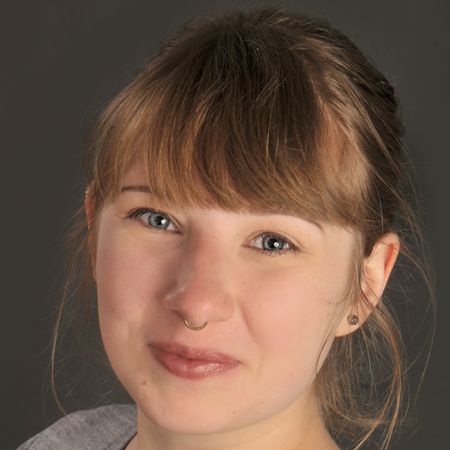
live online discussion
31 August 2020, 12:45 CET (UTC + 1)
(registered participants will receive the zoom link via email)
Maria von Einem
University of Bremen, Bremer Center of Computational Material Sciences (BCCMS), Hybrid Material Interfaces (HMI), former Center of Applied Space Technology and Microgravity (ZARM)
Abstract:
Thermal balances and ventilation design play an important role in habitat design for long duration missions. We conducted numerical fluid simulations for a habitat ventilation using the MaMBA laboratory. Comfort criteria are set for air mixing, temperature cooling and draft identification to evaluate ventilation quality. We found a two air loop system, room ventilation and rack cooling, to be able of removing 8.8kW of heat without exceeding the comfort criteria in the human inhabited area.
Maria von Einem studied her Bachelor in Biomimetics at the University of Applied Sciences in Bremen and added a Master of Science in production engineering for aerospace engineering from the University of Bremen. Now she is a PhD student and research fellow at the HMI group of BCCMS.
explained in two minutes
Thermoresponsive polybenzoxazine based composites featuring self-deploying properties for space application (P3)
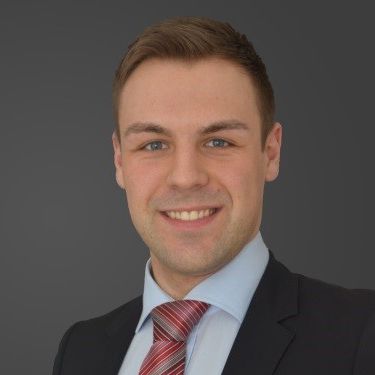
live online discussion
31 August 2020, 12:45 CET (UTC + 1)
(registered participants will receive the zoom link via email)
Nick Wolter
Fraunhofer IFAM and University of Bremen
Abstract:
This contribution gives access to fiber reinforced polybenzoxazine and polyester based copolymers with a thermally controlled shape memory behaviour that can facilitate self-deployable lightweight parts. Polyester based oligomers were added to benzoxazine monomers affecting both material´s final and benzoxazine´s processing properties. Moreover, the polyester component introduced thermoresponsive properties into the composites allowing for post-manufacturing shaping and self-deploying behaviour.
Nick Wolter (Tel.: +49421 2246-571) Research associate at the Fraunhofer IFAM since 2017 Doctoral candidate at the University of Bremen since 2017 Master´s degree of Science at the University of Bremen, Faculty of Production Engineering (2017) Bachelor´s degree of Science at the University of Bremen, Faculty of Production Engineering (2016)
A new setup to accurately simulate asteroid surfaces for experiments in the ZARM drop tower (P4)
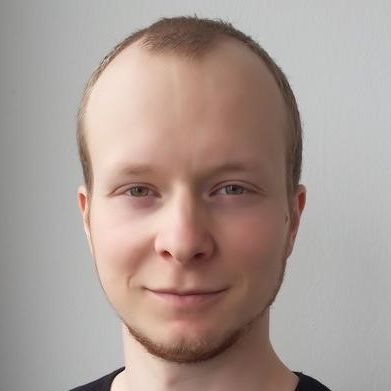
live online discussion
31 August 2020, 12:45 CET (UTC + 1)
(registered participants will receive the zoom link via email)
Kolja Joeris
Universität Duisburg-Essen
Abstract:
Our experimental setup enables us to simulate a very clean milligravity environment under vacuum. This is achieved by combing a vacuum chamber with a linear stage which can perform high precision accelerated motion. Using the linear stage avoids any Coriolis force. Our sample is a granular bed mimicking an asteroid surface. The experiment is carried out in the Bremen drop tower in it's catapult mode, granting more than 9s microgravity. In this work, we describe the setup and it's performance.
Kolja Jöris: Education: M.Sc. Energy-Science, Universität Duisburg-Essen (2018) B.Sc. Energy-Science, Universität Duisburg-Essen and BME Budapest (2014) Research: PhD candidate at AG Wurm, Universität Duisburg-Essen (current) Research Fellow at Universität Duisburg-Essen, Computational Physics (2018)
Postersession 2
Tuesday, 1 September 2020, 13:00 - 14:00 CET (UTC +1)
Registered participants will receive the links to the zoom meeting rooms via email. The authors will be available for a live discussion during the postersession.
Fatigue and damage diagnostics with predictor functions for new advanced materials by Machine Learning (P5)
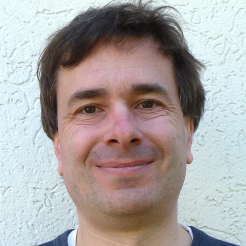
live online discussion
1 September 2020, 13:00 CET (UTC +1)
(registered participants will receive the zoom link via email)
Stefan Bosse
Department of Mathematics and Computer Science, Univ. of Bremen
Abstract:
There is an emerging field of new materials highly related to space applications. Typically, material properties are determined from tensile tests. We investigate approximating predictor functions by Machine Learning (ML) for fatigue prediction by history data measured from simple tensile tests within the elastic range of the materials. We show some preliminary results from a broad range of materials and outline the challenges to derive such predictor functions by ML.
Stefan Bosse is teaching and researching as a Privatdozent at the University of Bremen, Department of Computer Science, an interim professor at the University of Koblenz-Landau, MAPEX PI member, and a PI in the DFG founded research unit FOR3022 (Ultrasonic Monitoring of Fibre Metal Laminates)
explained in two minutes
Rapid flame aerosol synthesis of NiFe phosphide anode for alkaline water electrolysis (P6)
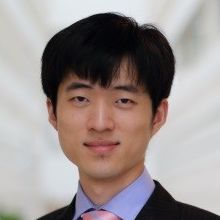
live online discussion
1 September 2020, 13:00 CET (UTC +1)
(registered participants will receive the zoom link via email)
Yuan Sheng
Cambridge Centre for Advanced Research & Education in Singapore
Abstract:
Flame aerosol synthesis is an established technology for mass production of nanoparticles. However its application has been limited to simple materials such as carbon black, fumed silica, and titania. We developed a one-step flame aerosol method to prepare nanostructured composite films of NiFe phosphide/phosphate and carbon within 10 min. As the anode of alkaline water electrolysis, the optimized film outperformed similar materials in open literature in terms of activity and durability.
Yuan Sheng is a research fellow at the Cambridge Centre for Advanced Research and Education in Singapore (CARES). He obtained his Ph.D. degree studying porous nanocatalysts at the National University of Singapore in 2016. His research interest includes gas-phase synthesis of nanomaterials, water splitting, and CO2 utilization.
The Origin of Interstellar CO2 - and what we can learn from it for materials design (P7)
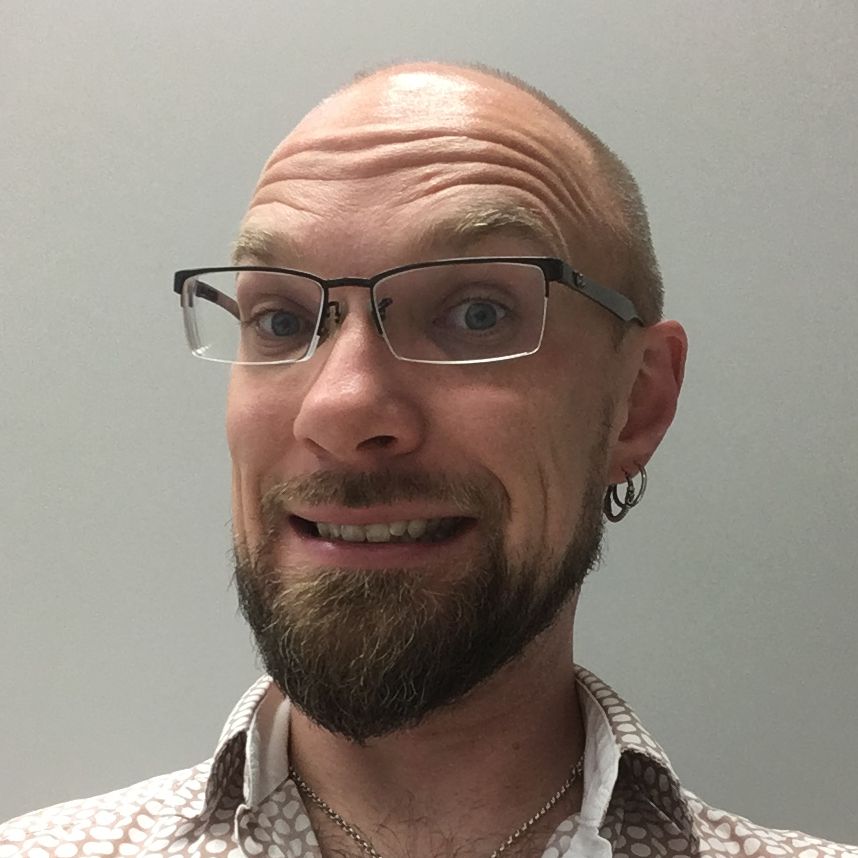
live online discussion
1 September 2020, 13:00 CET (UTC +1)
(registered participants will receive the zoom link via email)
Jan Hendrik Bredehöft
Universität Bremen, Institut für Angewandte und Physikalische Chemie
Abstract:
Carbon dioxide (CO2) is one of the most abundant molecules in the Universe, yet the exact pathway of its formation was under some considerable dispute until recently. The thorough investigation of the radiation-chemistry of ices made from water and carbon monoxide revealed surprising insights about the formation of CO2. Secondary electron-driven processes dominate chemistry in space and need to be considered when designing materials for the extreme conditions of space exploration.
Jan Hendrik Bredehöft received a PhD in chemistry from Uni Bremen in 2007. After post-doc stays in Milton Keynes and Belfast, he returned to Bremen where he received his habilitation in 2017. He researches the electron-driven chemistry of interstellar ices and was/is involved with ESA missions to comet 67P “Chury” and Mars.
explained in two minutes
Investigations of Advanced Electroluminescence Materials Synthesized in Microgravity (P8)
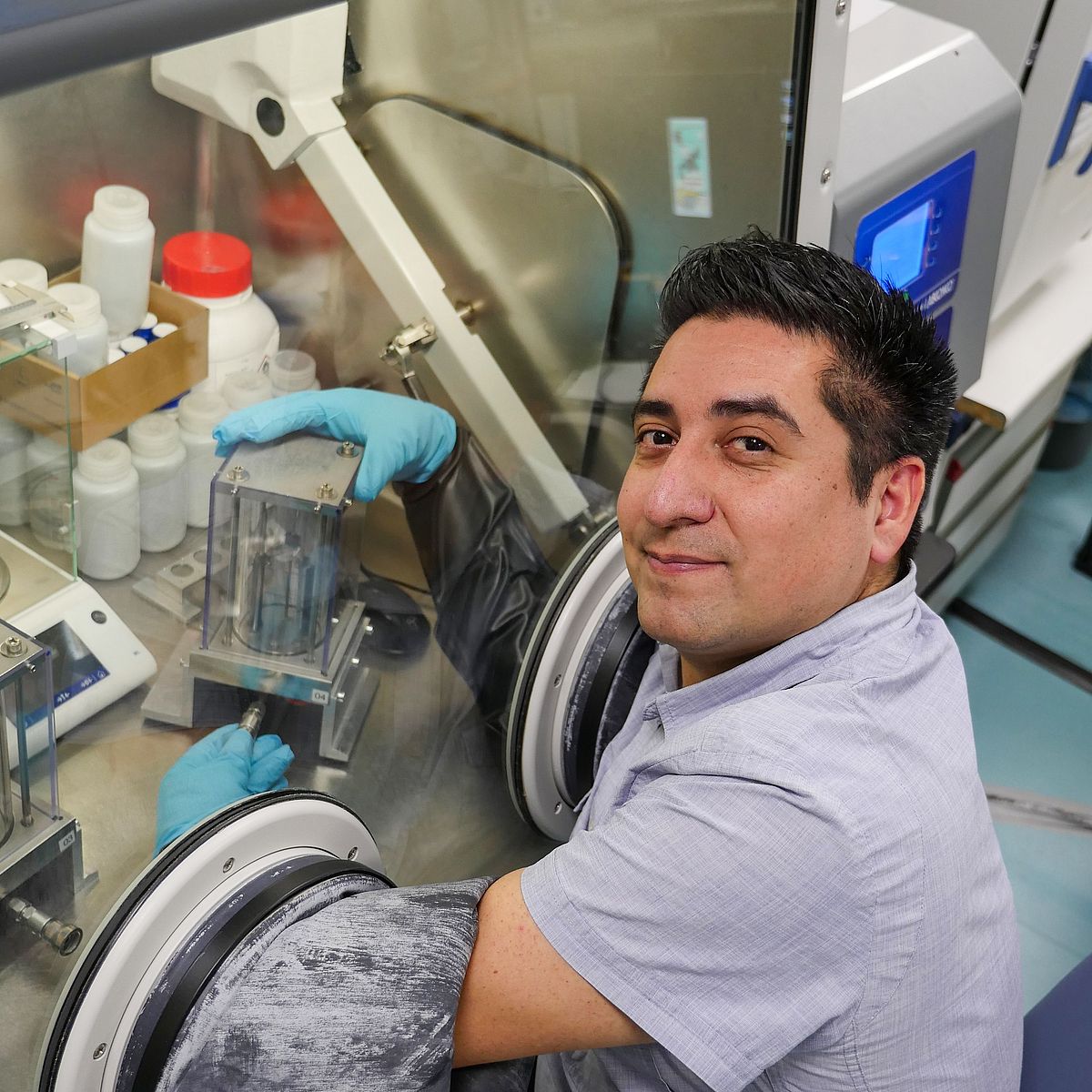
live online discussion
1 September 2020, 13:00 CET (UTC +1)
(registered participants will receive the zoom link via email)
Martin Castillo
ZARM/Uni-Bremen
Abstract:
The work herein aims at improving the energy efficiency of electroluminescent zinc sulfide (ZnS) doped materials synthesized in microgravity. Screens and displays consume tremendous amounts of power. These new advanced zinc sulfide doped materials are synthesized with a new process involving a rapid exothermic process involving high energy and nonlinearity coupled with a high cooling rate to produce materials formed outside of normal equilibrium boundaries in a weightless environment.
explained in two minutes
Postersession 3
Wednesday, 2 September 2020, 13:00 - 14:00 CET (UTC +1)
Registered participants will receive the links to the zoom meeting rooms via email. The authors will be available for a live discussion during the postersession.
Artificial Solar Wind for Space Material Developments (P9)
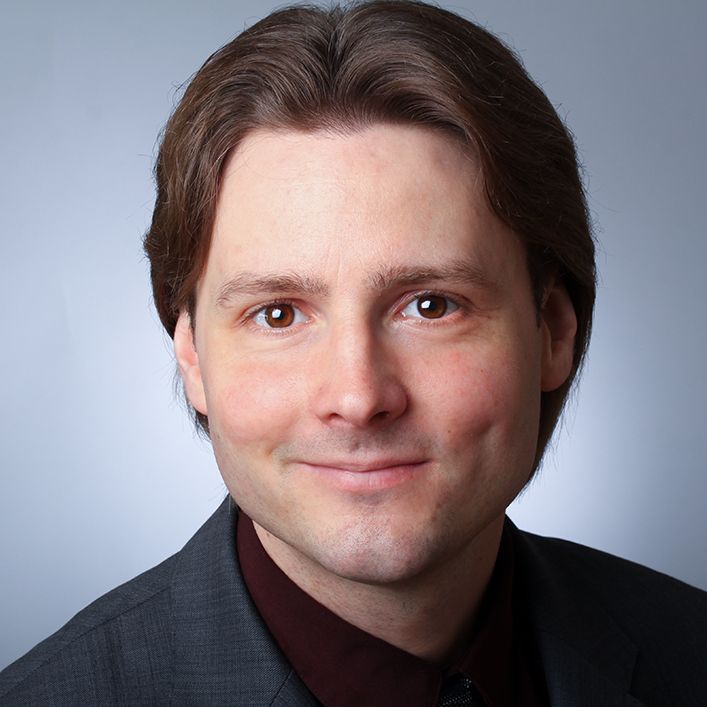
live online discussion
2 September 2020, 13:00 CET (UTC +1)
(registered participants will receive the zoom link via email)
Patrick Seefeldt
DLR, Institute of Space Systems
Abstract:
Investigating materials under space environment conditions requires the artificial recreation of both corpuscular and electromagnetic radiation under ultra-high vacuum conditions. DLR’s Complex Irradiation Facility combines a proton and an electron accelerator as well as electromagnetic radiation sources with broad wavelength range from ultraviolet radiation to infrared radiation in one facility. It is used to investigate the aging of materials in simulated space environment.
Patrick Seefeldt is 37 years old mechanical engineer with a diploma (RWTH Aachen 2010) and a PhD (University of Bremen 2018). As deputy head of the Mechanics and Thermal Systems Department (since 2016) and head of the Material Aging Group (since 2019) at DLRs’ Institute of Space Systems he is pursuing research in the field of innovative applications of new materials for space technologies.
explained in two minutes
STMF - Satellite Thermal Management with Ferrofluids (P10)
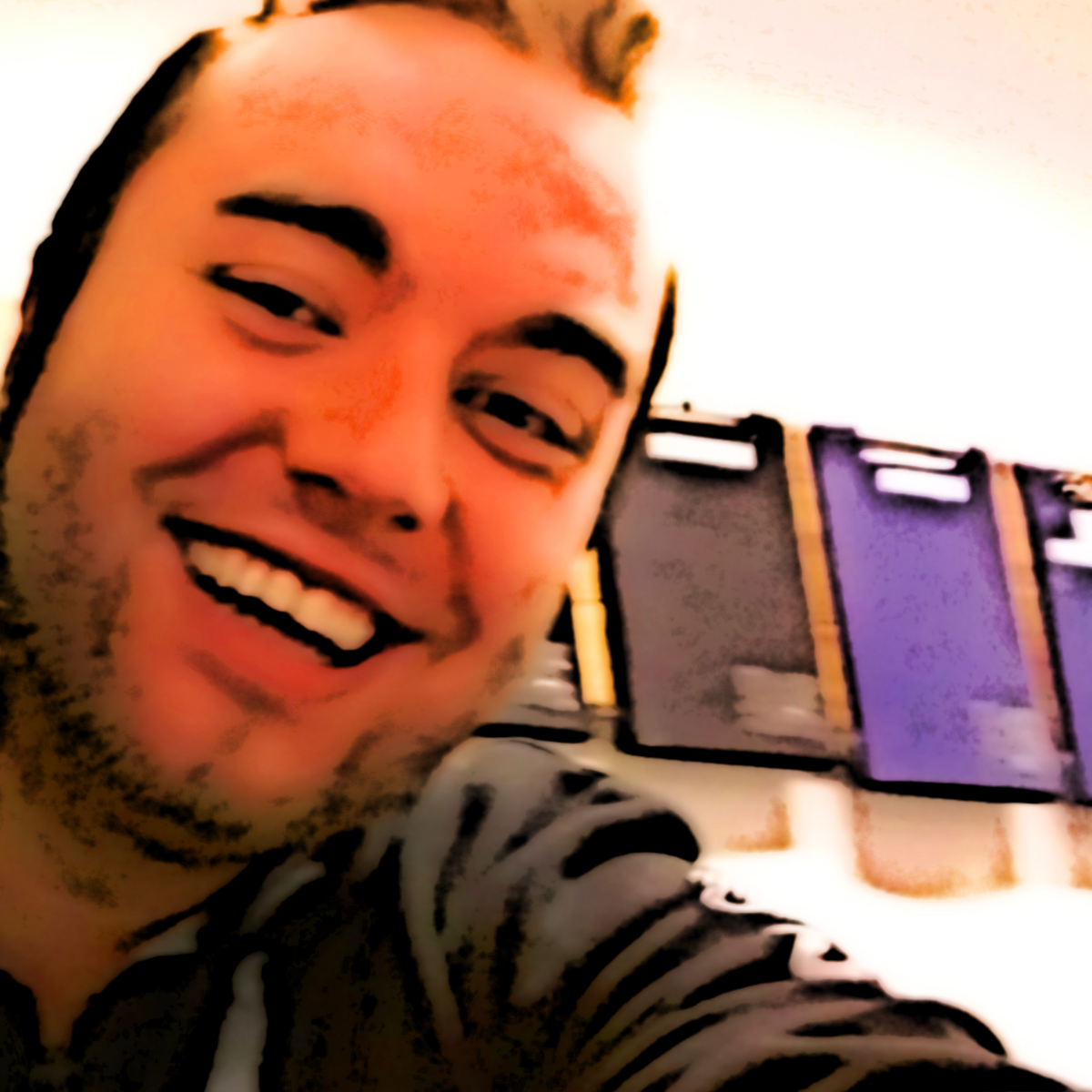
live online discussion
2 September 2020, 13:00 CET (UTC +1)
(registered participants will receive the zoom link via email)
Thomas Imhülse
University of Bremen
Abstract:
The Center of Applied space technology and microgravity (ZARM) at the University of Bremen develops a new thermal control system (TCS) solution together with its SME partner ZARM Technik AG. The TCS employs a agnetic pump ing scheme where mechanical vibrations are suppressed by utilizing ferrofluids, which can further be designed for radiation shielding. The STMF technology can control the temperature of an onboard computer and regenerative shield it against cosmic emission.
Thomas Imhülse is a motivated, adaptable, and responsible space engineer or to say: “Things are only impossible until they are not.” ― Jean- Luc Picard Oktober 2019: Master Of Science in Space Engineering November 2019: Ph.D. Candidate at the University of Bremen in the Innospace master's award-winning Project: STMF.
explained in two minutes
Cyanobacterium-based, Mars-specific life-support systems relying on local materials (P11)
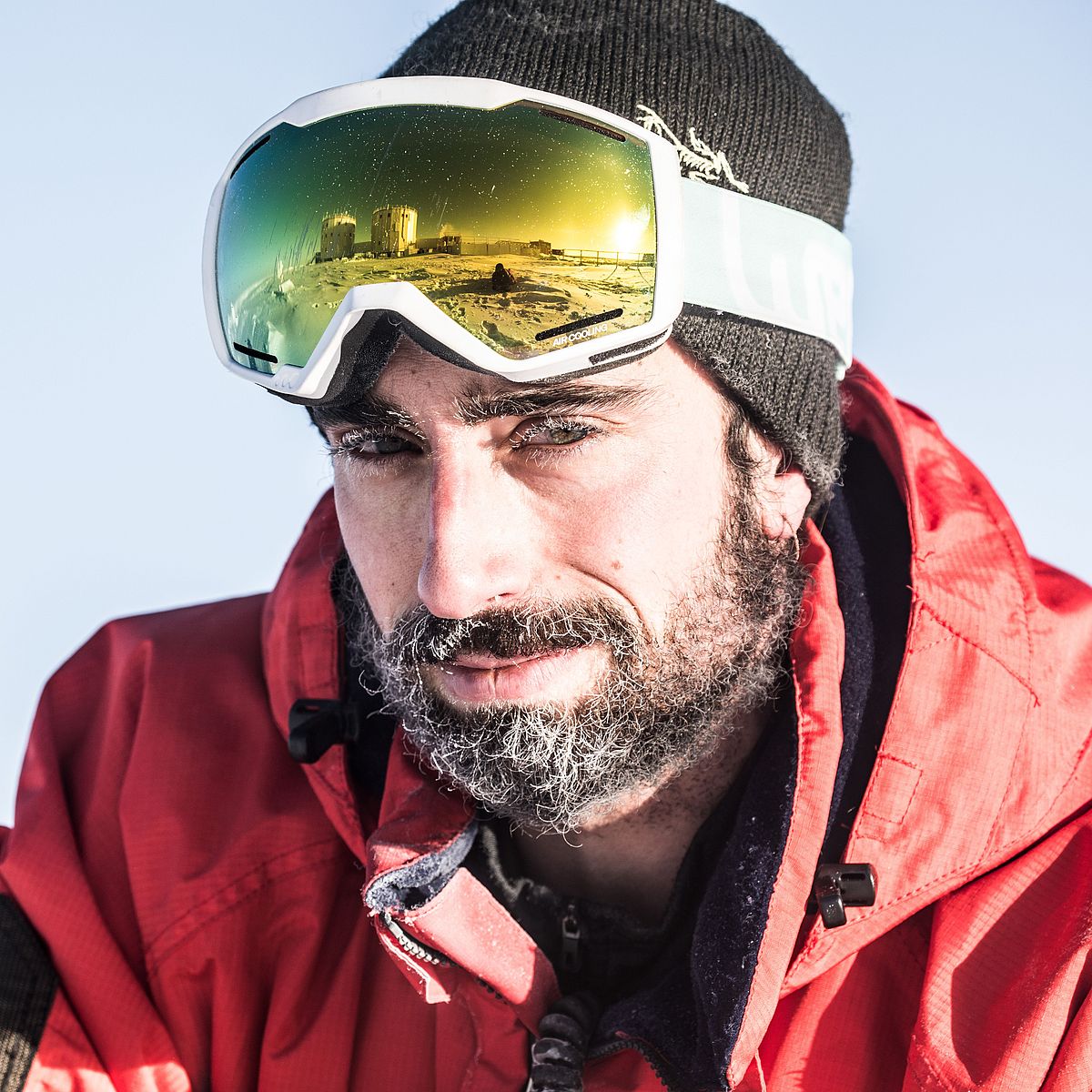
live online discussion
2 September 2020, 13:00 CET (UTC +1)
(registered participants will receive the zoom link via email)
Cyprien Verseux
Abstract:
The recently founded ZARM‘s Laboratory of Applied Space Microbiology investigates how cyanobacteria could be used on Mars as a basis to produce life-support consumables (e.g., food and oxygen) from materials available on site, both directly and as a nutrient source for other resource-producing organisms. We have developed and validated a low-pressure photobioreactor whose atmospheric parameters can be finely controlled, which we now use toward optimizing cyanobacterial growth conditions in a Martian life-support system.

